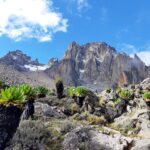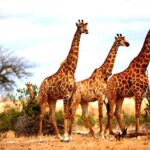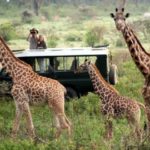Kenya big five safari
Kenya big five safari
Kenya is one of the best places in Africa for ticking off the Big Five: lion, leopard, buffalo, elephant, and rhino.Its one of the best destinations on African continent for the BIG FIVE SAFARIS. The famous big five is usually the highlight of African wildlife safari
Kenya big five safari
An excellent short safari combination tour for Kenya for those hoping to see all these .Charismatic creatures would be Masai Mara and Lake Nakuru (for black and white rhino).
Other top safari destinations
Destinations that host all or most Kenya Big Five safaris in Kenya include:
Tsavo East and Tsavo West
Amboseli, Laikipia Plateau,
Samburu-Buffalo Springs-Shaba,
Meru,
and to a lesser extent Shimba Hills.
In the north of Kenya, most notably Lake Nakuru, Ol Pejeta Conservancy and the Lewa Wilderness Conservancy, rhino can still be seen.Allowing you to see all of the Big Five.
The Big Five
This is a term that is used to refer to the 5 African animals. That early big game hunters considered most difficult and dangerous animals to hunt .This was on foot in Africa. These animals include the African elephant, lion, leopard, Cape buffalo, and rhinoceros. Today hunting of the BIG FIVE is forbidden. Fortunately, it’s tourists who do most of the shooting. But only with their cameras. However, the effects of hunting/poaching are still visible in Kenya .As it resulted into reduction of the population of the Big five.
ELEPHANTS
Thy are largest land animal in the world. Some of the adults can reach up to 3 meters in height. The adult males, bull elephants, are usually solitary creatures. While females are generally found in groups led by a matriarch surrounded by younger females and their offspring. Although they are referred by many as gentle giants, elephants can be very dangerous .They have been known to charge at vehicles, humans and other animals when they feel threatened. Elephants are commonly spotted on a Kenya safari in Amboseli National Park, Masai Mara Samburu National Park, Tsavo National park and among many other areas.
It’s important to note Kenya’s ongoing conservation efforts to protect some of its greater and lesser species – one of which is the elephant population.
The David Sheldrick Wildlife Trust is today the most successful orphan-elephant rescue and rehabilitation program in the world and one of the pioneering conservation organizations for wildlife and habitat protection in East Africa.
David Sheldrick wildlife trust
Founded in 1977 by Dr. Dame Daphne Sheldrick D.B.E, in honor of the memory of her late husband, famous naturalist and founding Warden of Tsavo East National Park, David Leslie William Sheldrick MBE, the DSWT claims a rich and deeply rooted family history in wildlife and conservation. The DSWT has remained true to its principles and ideals, remaining a sustainable and flexible organization.
LION
The lion is often called the king of the jungle because it is the fiercest and largest predator on land. Lion’s natural prey includes zebras, impalas, giraffes and other herbivores especially the wildebeest. Lions tend to group themselves in pride of 12. Males are easily distinguished from females with their shaggy manes and are generally much larger.
The females, however, do most of the hunting. Although they have been known to attack humans, lions are generally calm animals that do not usually seem threatened by close proximity to people. On a safari to Kenya a tourist can spot the big five mammals and these are mostly found in Tsavo national park, Amboseli national park, Maasai Mara National Reserve, Samburu National Reserve and among others.
LEOPARD
Unlike the lions, leopards are almost always found alone. They are the most elusive of the big five since they mostly hunt during the night.
The best time to find them is very early in the morning during the game drives in the various national parks and national reserves.
This parks are like Maasai Mara National reserve, Samburu National Reserve and among others, on a safari in Kenya or at night.
During the day you need to look carefully for these animals who usually can be found partially camouflaged in the undergrowth or behind a tree.
Generally, the male leopards are larger and heavier than the females, and the leopards are known as the smallest animal species in the big five mammals.
BUFALLO
Buffalo is perhaps the most dangerous to humans among the big five. Thy are very protective and territorial and when threatened they are known to charge with astonishing speed.Mostly found in groups and large herds. They spend most of their times grazing in the savanna and floodplains. When approached the dominant bulls will tend to take an aggressive vigilant stand while the other adults gather around the calves to protect them.
The buffaloes are great swimmers and they are known to kill the lions. Large numbers of buffaloes in Kenya are sighted at the Lewa Wildlife conservancy, Maasai Mara National Reserve and among many other places. While in Kenya on a safari do not miss outs this amazing nature travel.
RHINO
Rhinoceros are an endangered species. Even seeing one at a distance is a rare treat. There are two types of rhinos: the black and white rhinos. The white rhino gets its name not from its colour which is really more yellowish grey but from the Dutch word “weid” which means wide.
This is in reference to the animal’s broad, wide mouth. With its square jaw and wide lips, they are able to graze. The black rhino, on the other hand, has a more pointed mouth which it uses to eat leaves from trees and bushes.
White rhinos are much larger than the black rhinos and more common. do not miss out a safari with Delight Rose Safaris to spot yourself the most amazing big five animal species in the different national parks and reserves in Kenya especially like Nairobi National Park, Lake Nakuru National Park, Ol Pejeta national conserve, Meru national park to spot the rhinos and many others.
Where to see rhino in Kenya:
Ol Pejeta Conservancy
The region is a beacon of sustainability and holds East Africa’s largest black rhino population. The conservancy prides itself in safeguarding the critically endangered species, alongside other vulnerable species.
Both black and white rhino reside within Ol Pejeta Conservancy, as well as a number of other endangered species.
Ol Pejeta Conservancy
Housing over 165 critically endangered black rhino and 44 southern white rhino, Ol Pejeta Conservancy also provides sanctuary for Najin and Fatu, the two last remaining northern white rhino on the planet. However, neither of them can reproduce due to their age. In August 2019 a pioneering egg harvesting procedure was carried out in the Ol Pejeta Conservancy, fuelling hope for the survival of the species. Although already classified as “functionally extinct”, the future of this sub-species is now dependent on the development of in vitro fertilisation techniques.
“One of the best places in all of Africa to see rhino” – Ol Pejeta
Talk to us for booking the big five safaris






